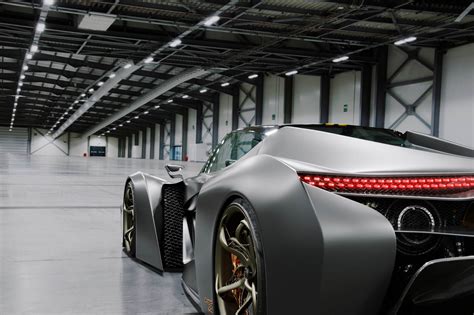2021: The Year of SP Automotive Chaos - Get Ready for Earth Edition!

2021 SP Automotive Chaos: Earth Edition
The year 2021 has been a tumultuous one for the automotive industry, with the COVID-19 pandemic continuing to wreak havoc on supply chains and production schedules. The global semiconductor shortage has also had a major impact on the industry, leading to production cuts and delays. In addition, the rising cost of raw materials and the ongoing trade war between the United States and China have also contributed to the challenges faced by automakers. Despite these headwinds, the automotive industry has shown resilience and is starting to see signs of recovery.
The Impact of the COVID-19 Pandemic
The COVID-19 pandemic has had a devastating impact on the automotive industry. In the early months of the pandemic, automakers were forced to shut down their factories and dealerships, leading to a sharp decline in sales. The pandemic also disrupted supply chains, making it difficult for automakers to obtain the parts and materials they needed to build vehicles. As a result, production schedules were delayed and many automakers were forced to cut back on production.
The Global Semiconductor Shortage
The global semiconductor shortage has been another major challenge for the automotive industry. Semiconductors are essential components in modern vehicles, used in everything from engine control modules to infotainment systems. The shortage has been caused by a number of factors, including the COVID-19 pandemic, the trade war between the United States and China, and a fire at a major semiconductor factory in Japan. The shortage has led to production cuts and delays at automakers around the world. In some cases, automakers have been forced to remove features from their vehicles or even stop production altogether.
The Rising Cost of Raw Materials
The rising cost of raw materials has also been a challenge for the automotive industry. The prices of steel, aluminum, and other materials have been rising steadily in recent months, due to a number of factors, including the COVID-19 pandemic, the trade war between the United States and China, and the increasing demand for electric vehicles. The rising cost of raw materials has put pressure on automakers' profit margins and has led to higher prices for consumers.
The Ongoing Trade War Between the United States and China
The ongoing trade war between the United States and China has also had a negative impact on the automotive industry. The tariffs imposed by the United States on Chinese goods have made it more expensive for automakers to import parts and materials from China. The trade war has also led to uncertainty in the market, making it difficult for automakers to plan for the future. The trade war is a major concern for the automotive industry, as it could lead to further production cuts and job losses.
Signs of Recovery
Despite the challenges faced by the automotive industry in 2021, there are also signs of recovery. The global economy is starting to rebound from the pandemic, and consumer confidence is improving. Auto sales are starting to pick up, and automakers are beginning to increase production. The semiconductor shortage is also starting to ease, and automakers are hoping that the worst is behind them.
The Future of the Automotive Industry
The automotive industry is facing a number of challenges, but it is also a resilient industry. Automakers are adapting to the new challenges and are finding ways to continue to innovate and produce vehicles that consumers want. The future of the automotive industry is bright, and there are many exciting things to come. Some of the trends that are likely to shape the future of the automotive industry include the rise of electric vehicles, the increasing popularity of autonomous vehicles, and the growing importance of connectivity and data.
Conclusion
The 2021 SP Automotive Chaos: Earth Edition has been a challenging year for the automotive industry, but there are also signs of recovery. The global economy is starting to rebound from the pandemic, and consumer confidence is improving. Auto sales are starting to pick up, and automakers are beginning to increase production. The semiconductor shortage is also starting to ease, and automakers are hoping that the worst is behind them. The future of the automotive industry is bright, and there are many exciting things to come.